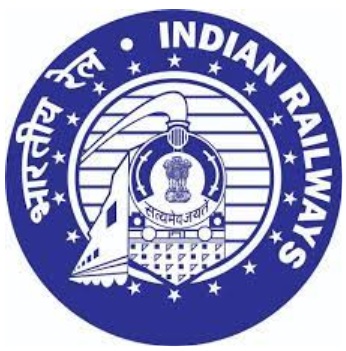Indian Railways is on part of becoming most critical department of Indian Government. Railways has recently launched a Vision 2030, which is very ambitious. It plans to increase its share to 45% in freight traffic (from current 25%). It also aims to achieve 100% electrification of tracks by 2024. It wishes to achieve a speed of 160 KMPH on critical tracks like Delhi – Kolkata and Delhi-Mumbai with achieving 130 KMPH on Golden quadrilateral sections (connecting 4 metros – Delhi, Kolkata, Mumbai and Chennai).
It is considerably increasing its engineering and Infrastructure in tie ups with French companies like Alstom to build high powered Locomotives, Mitsubishi and Japanese firms to launch high speed bullet train etc. (Mumbai to Ahmedabad). It is also very focused on laying new tracks in North Eastern states in India, which has long been ignored from Mainland, tracks all the way till Kashmir valley and near China Border for faster transport of goods and equipment’s. For ex. Bairabi – Sairang Rail Project which is around 80% complete, will connect Mizoram’s capital Aizawl with rest of India. In turn, Railways will play a big role in economic development of backward districts, strategic importance for defence Ministry and significantly reducing India’s reliance on Oil Imports through reducing Road Freight Traffic.
Why it is So Important
Indian Railways is the fourth largest rail network in the world, with a running track size of 102.8 Lacs Km. First three are USA, Russia and China. With a revenue of Rs. 1,91,000 crores, Indian Rail employees 12 Lac people directly. It is run through 18 operational divisions.
With a first passenger train starting from Mumbai to Thane, on 16 Apr 1853. The train had 14 carriages and carried 400 passengers for a 34 km ride. Since than Railways, have added 13,000 passenger trains daily covering around 7300 railway stations.
Some interesting and key facts for Indian Railways, worth mentioning:
- It is the eight largest employer in the world, employing 12 Lac people
- Around 1.3 crore passengers travel daily, on an average
- A revenue of Rs. 1,91,162 crores in FY 22-23
- It has 12,000 locomotives, 79,000 passenger coaches and 2,93,000 freight wagons
- It carried around 3.5 Bn (350 cr) people in FY 21-22
- It carried around 1500 MT of good/freight in FY 22-23
- Railways has 16 more undertakings like IRCTC, RITES, IRCON, CONCOR etc. which specialises in Bridge construction or ticket booking and caterings etc. (https://indianrailways.gov.in/railwayboard/uploads/directorate/stat_econ/Annualreport10-11/Undertaking_organisation.pdf)
- It operates through 19 zones (Zone GM) and 70 divisions (DRMs)
Future Plans: Make India Great Again
Since 2014, post arrival of BJP government at Central government, which controls Ministry of Railways and under leadership of Prime Minister Sh. Narendra Modi and Sh. Ashwini Vaishnaw as Railway Minister, Railways started lot of new initiatives:
- Railways has now installed Bio Toilets in all Passenger trains and has achieved 100% Open defecation free status as part ‘Swachh Bharat Abhiyan’. Bio Toilets are now installed in 79,000 passenger coaches (except EMUs)
- High focus on passenger safety, with number of train accidents reduced from 59 in 2018-19 to 22 in 2020-21. Launched technologies like ‘Kavach’ and Electronic Interlocking
- Railways plan to modernise around 1253 railways stations (as part of Adarsh Stations) and has beautified 1213 stations in FY 22-23
- Focus on launching LHB coaches, which are superior to existing ICF coaches. Manufacturing around 6000 LHB coaches every year, on an average, with an aim to replace all ICF coaches
- Recently, a new umbrella work scheme of ‘Major Upgradation of Railway Station’ has been initiated. The facilities envisaged in this scheme includes rebuilding/ improvement/ augmentation of station bbuilding, congestion free non-conflicting entry/exit to the station premises, segregation of arrival/departure of passengers, adequate concourse without overcrowding, integration of both sides of the city wherever feasible, user friendly signages, well illuminated circulating area and sufficient provision for drop off, pick up & parking etc., and all facilities of Divyangjans among other facilities as per requirement and feasibility (https://pib.gov.in/PressReleasePage.aspx?PRID=1809566)
- Launched 16 semi bullet trains ‘Vande Bharat Express’ as part of Intercity connectivity and increase speed of Mail/Express trains by 25 KMPH as per ‘Mission Raftaar’
- Launched Dedicated Freight corridors – Western and Eastern for faster good transportation. Currently Eastern and Western Dedicated freight corridor is 56% operational
- Plan to carry a freight loading of 3000 MT by 2027 (from currently 1500 MT), as per ‘Mission 3000’ and identify more dedicated freight corridor.
Concluding Remarks
Indian Railways, continue to expand its network, become world class and bringing new technology, to manage traffic, amenities, passenger comfort. But, it will not happen without facing some critical challenges:
- Funds: Railways will need approx. Rs. 2,90,000 crores for FY 23-24 for Capex, which has increased to 5 times from 2014.
- Railways spends around 70% of expenditures on salaries and pensions (approx. Rs. 93,000 crores in FY 21-22), which leaves it little for any modernisation or infrastructure.
- Railways suffer from bureaucratic inefficiencies, with a strong Railway Board and a Railway Union, which does not allow easy termination of corrupt and incapable bureaucrats
- Each Division works in its own silos; hence conflict and friction are common among different DRMs and Zonal Managers, leading to wastage of resources
- Illegal occupation of Railways land is very common. As per IR, around 782 hectares of its land is under encroachment in FY 21-22.
